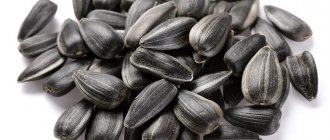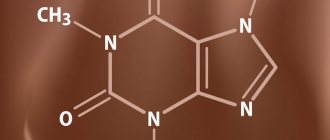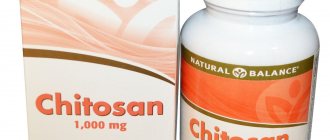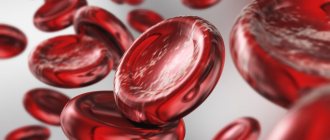All about cholesterol
Svetlana Filippovna, so what is cholesterol and how necessary is it for the body?
As such, cholesterol is a water-insoluble alcohol and is just as necessary for the body as carbohydrates, since cells use cholesterol to build membranes and produce hormones, bile acids and vitamin D3 from it.
The problem only arises when there is an excess of it. How does cholesterol get into our body?
Cholesterol is found in products of animal origin, so advertisements shouting that “there is no cholesterol in our sunflower oil” can be ignored - it cannot be there a priori.
But it must be said that the body absorbs from what we eat, God forbid 10%! The liver itself synthesizes cholesterol, about 80%. She needs him! After all, with its help, red blood cells, platelets, and connective tissues are renewed. Sometimes a high cholesterol level can suggest a tumor formation, because as it grows, the body begins to synthesize a very large amount of cholesterol, since cholesterol is the builder of even such tissue. What level of cholesterol is harmful to the body?
The thing is that cholesterol combines in the blood with high and low density lipoproteins.
High-density lipoproteins, combining with cholesterol, are transferred to the liver and are safely processed there, but low-density lipoproteins, together with cholesterol, are transported into the vessels and have a damaging effect on the endothelium of the vascular wall. It turns out that high cholesterol is not good for the body. In general, everyone has their own individual cholesterol level; it is impossible to classify everyone into groups, since everyone has a different metabolism, so treatment, if necessary, is prescribed only after a full examination. After all, a person may also have congenital problems. Let me give you an example. Cholesterol is transported by a transport protein, which is part of low-density lipoprotein, and in this transport protein, let’s say, there is some kind of genetic defect, which means it will not be transferred there at the speed that is necessary, which means it will not build this membrane as needed , since he does not build this membrane as needed, all this will accumulate in the body. In this case, by a certain age this can lead to the most disastrous results. Everyone should understand that they need to be very wary of cholesterol and monitor its level. If a person has high cholesterol levels, he should not remain indifferent to this fact and should not ignore it. If it is elevated, doctors usually prescribe statins. What are statins? Let's imagine a substance from which cholesterol begins to form - 22 reactions will take place before it is finally formed, and statins act on the enzyme at the very beginning, thereby destroying cholesterol. Does low cholesterol affect the body?
A good question and at the same time a difficult one.
Low cholesterol significantly increases the risk of death in older people. Scientists from the University of Hawaii came to this conclusion. So far, scientists cannot explain the data obtained. However, it is already clear that caution should be exercised in the fight against cholesterol in older people. Is high cholesterol dangerous for those who are young?
The first signs of atherosclerosis can already be detected at the age of 25-30. In addition, cholesterol metabolism disorders can be congenital.
And then constant monitoring of its level is necessary. Maintaining normal cholesterol levels is one of the main ways to prevent heart disease. This position in cardiology remains in force today. Svetlana Filippovna, so what is the potential weapon against cholesterol?
Monitor your body weight.
The fatter you are, the more cholesterol your body produces. Taking vitamins C, E, and calcium significantly increases the level of high-density lipids. Don't forget about tea, rice and oat bran.
Risk factors for cardiovascular disease
Risk factors are not the cause of the disease. Risk factors are external influences and internal characteristics of the body that contribute to the development of the disease. There are modifiable factors - those that a person can change. And unmodifiable, which cannot be influenced.
| Modifiable risk factors | Non-modifiable risk factors |
|
|
In recent years, increasing attention has been paid to psychological factors. Anxiety, social isolation, depression and low levels of social support have an adverse effect on the formation and progression of cardiovascular diseases.
Attention! Homocysteine!
Recently there has been a lot of talk about homocysteine and especially about its role in the development of atherosclerosis. What kind of homocysteine is this?
We can say that cholesterol now has a competitor - homocysteine.
Unlike cholesterol, it is not found in foods, but is formed in our body from the essential amino acid methionine. Homocysteine increases with a lack of B vitamins and folic acid. But an excess of it in the body creates problems: it is the first to penetrate the endothelium (wall) of blood vessels and damage it, and only then does cholesterol get to work. What factors, besides a lack of vitamins, contribute to an increase in homocysteine?
These are genetic factors caused by enzyme pathology.
In this regard, homocysteine metabolism is disrupted and its level increases. We must not forget about patients whose kidney function is impaired with age, since homocysteine is excreted mainly by the kidneys. What effect does high homocysteine have on the body?
In addition to a marker of vitamin deficiency, its high level affects the coagulation system, creating the preconditions for the occurrence of a thrombotic state, inhibiting the work of the anticoagulant system.
A vicious circle arises of a wide variety of relationships between homocysteine and the coagulation system, which subsequently requires careful clinical and laboratory examination. Agree that homocysteine is not so simple! Tell me, are there any standards for homocysteine levels in the blood?
Due to the fact that even small amounts of homocysteine can have a fairly strong effect on blood vessels, there is practically no standard. After all, its concentration in the blood is 1000 times less than cholesterol, and the harm is almost as many times greater. Although, of course, there are laboratory standards.
Statins and the liver. Briefly about the main thing
To carry out endogenous synthesis of cholesterol, about 100 reactions are required. Cholesterol synthesis can be divided into 3 stages, during which mevalonate, squalene and cholesterol itself are successively formed from the products of glycolysis in the liver. One of the reactions of the first stage (reduction of HMG-CoA to mevalonate), catalyzed by HMG-CoA reductase, is regulatory in the metabolic pathway of cholesterol synthesis. The enzyme is activated by insulin during the absorptive period, and inactivated by glucagon or with an increase in cholesterol concentration.
In 1971, Japanese doctor Akira Endo and his colleague in the Sankyo laboratory in Tokyo began to study the ability of the waste products of the fungal culture Penicillium citrinium to suppress the synthesis of acetate-labeled cholesterol in cell culture. A few years later, the molecule ML-236B, later named compactin, was discovered, which inhibited the regulatory enzyme of cholesterol biosynthesis, HMG-CoA reductase. It can be considered that this particular drug became the ancestor of statins. In 1987, the first statin drug appeared [1, 2].
Statins are HMG-CoA reductase inhibitors. According to the principle of competitive antagonism, the statin molecule binds to the part of the coenzyme A receptor where this enzyme is attached. Another part of the statin molecule inhibits the conversion of hydroxymethyl glutarate to mevalonate, an intermediate in the synthesis of the cholesterol molecule. Inhibition of the activity of HMG-CoA reductase leads to a series of sequential reactions, as a result of which the intracellular cholesterol content decreases and a compensatory increase in the activity of LDL receptors involved in the catabolism of LDL cholesterol (the main atherogenic blood lipoproteins) occurs.
Thus, the lipid-lowering effect of statins is associated with a decrease in the level of total cholesterol due to LDL cholesterol.
In addition to the lipid-lowering effect, statins have a positive effect on endothelial dysfunction (a preclinical sign of early atherosclerosis), on the vascular wall, the state of atheroma, improve the rheological properties of blood, and have antioxidant and antiproliferative effects [3].
More than a decade has passed since the discovery of statins, and their mechanism of action has been well studied.
Evidence from clinical trials has given statins a generally accepted reputation as effective and safe lipid-lowering drugs, but there is some evidence of their side effects [4].
The hepatotoxic effect of statins is manifested primarily by an increase in alanine aminotransferase (ALAT) and aspartate aminotransferase (AST). The exact mechanism of this increase is not known. A number of authors believe that such an asymptomatic increase in transaminases may be more likely to be a compensatory response to a decrease in lipid levels, rather than the result of the direct hepatotoxic effect of statins.
However, doctors are wary of prescribing statins to patients with liver disease. And sometimes such patients, even with a high risk of cardiovascular diseases, are deprived of this “gold standard”.
As can be seen from Table 1, the most popular (and for many years) are lipid-lowering drugs. And various drugs from the statin class alternately occupy first place not only among the sales of lipid-lowering drugs, but also among all drugs presented on the pharmacological market.
Due to such demand for statins, the answer to the question about their safety is truly relevant.
Are statins dangerous for the liver?
To answer this question, let’s consider the use of statins for the most common liver diseases, in the structure of which the following have become most widespread:
1. Non-alcoholic fatty liver disease (NAFLD) (71.6%).
2. Viral hepatitis (VH) (13.9%).
3. Alcoholic liver disease (ALD) (13.93%) [5].
Statins and NAFLD
Among overweight people, the incidence of various forms of NAFLD is 58–74%, and in morbid obesity it is 95–100%. The close connection of NAFLD with excess body weight gives reason to consider this disease as a hepatic component of the metabolic syndrome.
Insulin resistance and changes in the profile of hormones that regulate fat metabolism (leptin, adiponectin, etc.), oxidative stress and the inflammatory process are considered as the main links in the pathogenesis of NAFLD.
Peripheral insulin resistance is accompanied by hyperglycemia and/or hyperinsulinemia. Under conditions of hyperinsulinemia, lipolysis increases in adipose tissue with the release of free fatty acids (FFA). In hepatocytes, beta-oxidation of FAs is blocked, thus the liver enzyme system is not able to metabolize their excess. Lipid vacuoles are formed - hepatic steatosis.
Under conditions of increased intake of FFAs into the liver, the role of β-peroxisomal and ω-microsomal oxidation with the participation of cytochrome P450 subunits increases, while the importance of mitochondrial oxidation decreases. Due to impaired mitochondrial oxidation, adenosine triphosphoric acid (ATP) deficiency occurs in the cell, and an increase in the intensity of microsomal oxidation is accompanied by the accumulation of reactive oxygen species. With steatosis, this creates the preconditions for lipid peroxidation, the accumulation of highly toxic malondialdehyde and the development of oxidative stress. Against this background, due to complex interactions between cells of the immune system, macrophages, and hepatocytes, hepatocytes die through the mechanism of apoptosis or necrosis, an inflammatory reaction occurs, and fibrous tissue grows; steatosis transforms into steatohepatitis, in some cases progressing to the stage of cirrhosis [6–8].
The fact that the manifestations of NAFLD progress from simple steatosis to steatohepatitis and cirrhosis, and in rare cases even to hepatocellular carcinoma (HCC), confirms that NAFLD is not a benign finding, as previously thought.
Based on its pathogenesis, NAFLD should be considered not just as a liver disease, but as a complex multifactorial process associated with general metabolic disorders. The approach to treating such a disease should be comprehensive and likely include statins [9]. The main argument in favor of statins is the increased risk of cardiovascular disease in patients with NAFLD, as evidenced by a number of studies. In patients with NAFLD, cardiovascular disease is a much more common cause of death than liver disease itself [10]. In this regard, the prescription of statins (even despite their possible liver side effects) seems justified.
Thus, a three-year prospective study, The Greek Atorvastatin and Coronary Heart Disease Evaluation (GREACE), showed that of 880 patients with NAFLD who took statins, only less than 1% completely stopped taking the statin due to the development of a side effect associated with liver damage (there was an increase in concentrations of ALT or AST more than 3 times the upper limit of normal (ULN)).
Moreover, in the subgroup of patients with initially elevated concentrations of ALT, AST, or gamma-glutamyl transpeptidase (GGT) who took statins, an improvement in biochemical parameters of liver function was noted during the initiation of therapy. Within 3 years, liver function indicators returned to normal in 89% of patients. The risk of developing cardiovascular complications while taking statins decreased by 68%.
Thus, in patients with mild to moderate increases in biochemical parameters of liver function, presumably due to NAFLD, the use of statins is safe and can improve biochemical parameters of liver function and reduce the incidence of complications of cardiovascular diseases. Therefore, in patients with NAFLD, statins are not only safe, but also necessary for them [11].
Thus, when comparing the dynamics of liver function indicators in 3 groups of patients with NAFLD: 1st – patients with normal liver function tests, taking statins; 2nd – patients with elevated enzymes, including significantly, those taking statins; 3rd – with an increase in enzymes without prescribing statins, after 6 months. the maximum increase in transaminase levels compared to the baseline was observed in group 3. In the group with initially elevated levels of transaminases, a predominantly mild or moderate increase was observed [12].
Numerous studies have identified possible effects of statins, explaining the improvement in biochemical parameters and histological appearance in NAFLD. Among them:
- reduction in the level of oxidized LDL;
- an increase in the activity of the transcription factor Nrf2, which controls the expression of many protective genes in response to oxidative stress (antioxidant effect);
- decreased levels of tumor necrosis factor (TNF-α), IL-6, and possibly C-reactive protein;
- decreased delivery of FFA to the liver;
- impact on the insulin signaling system through changes in adiponectin metabolism [13].
The search for the safest statin in patients at high cardiovascular risk with concomitant NAFLD continues. Based on the characteristics of the pharmacodynamics of statins, it should be recognized that the hydrophilicity of the molecule is essential for the safe use of a statin. It is preferable to take rosuvastatin. Such data are confirmed by our own clinical experience. The results of the STRELA study, which assessed the effectiveness and safety of rosuvastatin (Mertenil) in patients with NAFLD, demonstrated pronounced lipid-lowering efficacy and high safety of Mertenil in patients with metabolic syndrome. The pleiotropic properties of Mertenil have been proven in the form of a decrease in the augmentation index and vascular stiffness in patients with arterial hypertension, dyslipidemia and fatty liver.
Statins and viral hepatitis
First of all, the issues of the possibility of using statins in patients with chronic viral hepatitis (CVH), in particular with chronic viral hepatitis B and C, are relevant.
There are approximately 400 million people worldwide who are chronically infected with hepatitis B virus (HBV), and approximately one million die each year from diseases associated with HBV infection. And the number of people infected with hepatitis virus (HCV) worldwide may reach 500 million.
Of course, some patients with chronic hepatitis belong to a group of high cardiovascular risk, and, therefore, such patients require statins.
Scientists from California (USA) compared changes in biochemical indicators of liver function over 12 months. treatments that occurred in 3 cohorts of patients of similar age, gender and with a similar body mass index: (I) patients with hyperlipoproteinemia and antibodies to HCV who received statins; (ii) patients with anti-HCV antibodies who did not receive statins; (III) patients without anti-HCV antibodies receiving statins. As a result, in patients with hepatitis C who received statins, the frequency of mild and moderate changes in biochemical parameters of liver function was almost 2 times higher than in those who did not receive statins, but the frequency of severe changes was 5.5 times lower. Among patients receiving statins, the incidence of mild to moderate impairment, severe impairment, and statin discontinuation due to hepatotoxicity was similar in patients with and without anti-HCV antibodies. Therefore, the administration of statins to patients with chronic hepatitis C appears to be safe [14].
It is important that 50% of patients infected with HCV have fatty degeneration of hepatocytes, and it is necessary to differentiate two forms of steatosis: in addition to HCV-induced steatosis, metabolic steatosis has also been identified. Therefore, statins may have a beneficial effect in patients with chronic HCV [15].
In February 2012, the Journal of Clinical Oncology published results identifying the value of statins in HBV.
Y. Tsang et al. presented evidence that statin use may reduce the risk of developing hepatocellular carcinoma (HCC) in patients with hepatitis B.
The study included 33,413 patients with HBV. The number of new cases of HCC was analyzed over a period of 10 years.
In patients taking statins against the background of HBV, hepatocellular cancer was 53% less common. The incidence rate (per 100 thousand people) of HCC in patients taking statins was 210.9, compared with the incidence rate in patients not receiving statins - 319.5 (p <0.001). A reduction in the risk of HCC is associated with dose-dependent use of statins. Low doses of statins reduced the risk by only 34%, while high doses reduced the risk by 66%. Compared with statins, there was no statistically significant reduction in the risk of HCC in the control group taking lipid-lowering drugs from other groups [16].
The above allows us to formulate an important practical conclusion: taking statins reduces not only cardiovascular risk, but also the risk of developing some complications of chronic hepatitis.
Statins and alcoholic liver disease
The main “springboard” for ethanol metabolism is the liver, where the conversion of ethanol into toxic acetaldehyde occurs in 3 ways:
1) Up to 85% of ethanol is oxidized by the cytosolic NAD+-dependent enzyme of the liver - alcohol dehydrogenase (ADH) to acetaldehyde. In chronic alcoholism, the amount of the enzyme in the liver does not increase, i.e. it is not an inducible enzyme.
The toxic effect of acetaldehyde depends on its amount formed, which is determined primarily by the volume of alcohol ingested and the rate of its oxidation. The rate of ethanol oxidation is directly related to the activity of the ADH isoenzymes present in an individual and depends on the rate of further metabolism.
2) Cytochrome - P450-dependent microsomal ethanol oxidation system (MEOS) is localized in the membrane of the smooth endoplasmic reticulum (ER) of hepatocytes and metabolizes about 10–15% of ethanol entering the liver. This ethanol oxidation pathway occurs with the participation of one of the P450 isoforms - the isoenzyme - P450 II E1.
MEOS plays a minor role in the metabolism of small doses of alcohol, however, in people suffering from chronic alcoholism, selective induction of the P450II E1 isoform is observed (which accelerates the oxidation of ethanol by 50–70%) and competitive inhibition of the synthesis of other isoforms involved in the metabolism of xenobiotics and drugs [ 2, 17]. Thus, the drugs of interest to us from the statin group are metabolized by CYP3A4, CYP2C9, CYP2C8, CYP2C19, CYP2D6 by cytochrome P450 isoenzymes [18].
3) The role of the catalase system, localized in the peroxisomes of the cytoplasm and mitochondria, in the metabolism of ethanol in humans is insignificant.
Acetaldehyde formed from ethanol is oxidized to acetic acid by two enzymes: FAD-dependent aldehyde oxidase and NAD+-dependent acetaldehyde dehydrogenase (AlDH).
An increase in the concentration of acetaldehyde in the cell causes the induction of the enzyme aldehyde oxidase. During the reaction, acetic acid, hydrogen peroxide and other reactive oxygen species are formed, which leads to the activation of lipid peroxidation (LPO).
Another enzyme, AlDH, oxidizes the substrate with the participation of the coenzyme NAD+ to acetate through the acetyl-CoA stage.
In the initial stages of alcoholism, the oxidation of acetyl-CoA in the TCA cycle is the main source of energy for the cell. Excess acetyl-CoA in citrate leaves the mitochondria, and fatty acid synthesis begins in the cytoplasm.
The effectiveness of AlDH is largely determined by the predominance of the enzyme isoform with different activities.
The damaging effects of ethanol include:
- toxic effect of acetaldehyde;
- lipid metabolism disorder.
Ethanol oxidation causes increased consumption of the coenzyme NAD+ and an increase in the NAD•H/NAD+ ratio. This leads to a shift to the right of the reaction: dehydroxyacetone phosphate + NAD•H + H+ ⇄ glycero-3-phosphate + NAD+.
The consequence of increased synthesis of glycero-3-phosphate is increased esterification of FA and synthesis of triglycerides, which initially increases the production of VLDL by the liver and leads to hypertriacylglycerolemia. With chronic alcoholism, the synthesis of phospholipids and proteins in the liver, including those involved in the formation of VLDL, decreases, and the rate of β-oxidation decreases. Intracellular accumulation of TAG and FA occurs, which leads to fatty liver degeneration;
- increased cellular redox potential (lactic acidosis due to an increase in the NAD•H/NAD+ ratio, increased synthesis of lactate from pyruvate, inhibition of gluconeogenesis);
- decreased activity of mitochondrial enzymes (and, as a result, decreased ATP formation);
- hypoxia;
- fibrosis;
- immune mechanisms (increased concentrations of serum proinflammatory cytokines: IL-1, IL-2, IL-6, tumor necrosis factor α (TNF-α)) [2, 17].
If we abstract from the trigger factor (ethanol) and the metabolic reactions triggered by it, the entire pathogenesis of alcoholic disease can be reduced to the following links: activation of lipid peroxidation, oxidative stress, damage to phospholipids of mitochondrial membranes, disruption of the systemic and cellular components of lipid metabolism, accumulation of fat in the liver due to excess synthesis of FFA, decreased rate of β-oxidation, decreased synthesis or secretion of very low-density lipoproteins (VLDL) [19].
Thus, the pathogenesis of ALD includes the same links as the pathogenesis of NAFLD. Moreover, the morphological units of ALD are identical to NAFLD: fatty degeneration (liver steatosis), alcoholic hepatitis, liver cirrhosis with a possible outcome in the development of HCC. Clinical, laboratory and instrumental methods also do not allow us to draw a clear boundary between the different types of steatohepatitis. Often, in one patient, metabolic syndrome can be combined with regular alcohol intake. There are also suggestions about the development of insulin resistance due to chronic alcohol intake.
Consequently, in many patients the boundary between ALD and non-alcoholic steatohepatitis cannot be clearly defined. This means that for the treatment of steatohepatitis of non-alcoholic and alcoholic etiology, a unified approach is sometimes necessary [20, 21].
The pleiotropic effects of statins and their influence on the “fatty” liver encourage the use of the latter in the treatment of patients with ALD. Statins increase the bioavailability of nitric oxide in the endothelium of the liver microvascular bed, protecting the liver from ischemia and oxidative stress. NO has a relaxing effect on the muscle layer of the vascular wall by stimulating the formation of cGMP. In addition, the most important practical property of NO is its ability to inhibit the adhesion of neutrophils to the walls of blood vessels [22]. By affecting nitric oxide metabolism, statins are also able to reduce portal hypertension in patients with cirrhosis [13]. In contrast to ethanol, statins have been shown to reduce TNF-α secretion by monocytes [23]. Thus, statins might be useful in ALD. First of all, it is logical to use hydrophilic statins, in particular rosuvastatin. Wider use of rosuvastatin will be ensured by high-quality bioequivalent drugs, for example, the well-studied drug Mertenil (Gedeon Richter). The doctor's decision in the case of ALD is greatly influenced by uncertainty about the patient's adherence to the recommendations of complete alcohol abstinence. Therefore, the ability of alcohol to competitively disrupt the biotransformation of statins in the liver leads to limitation of the use of statins in patients with alcoholic hepatitis.
Thus, the use of statins in patients with non-alcoholic, alcoholic liver disease, in patients with viral hepatitis outside periods of activity is justified (in the case of an unexpressed increase in transaminase levels - less than 3 ULN). In the near future, we will not protect, but treat the liver with statins in certain clinical situations, justifying the short motto: “What is good for the heart is good for the liver.”
Literature
- Steinberg D. Thematic review series: The Pathogenesis of Atherosclerosis. An interpretive history of the cholesterol controversy, part V: The discovery of the statins and the end of the controversy // J. Lipid. Research. 2006. Vol. 47. P. 1339–1351.
- Biochemistry: Textbook. for universities / Ed. E.S. Severina, 2003.
- Electronic version of the Vidal Directory, 2012.
- Alexandrov An. A., Yadrikhinskaya M.N., Kukharenko S.S. and others. Statins and diabetes mellitus: ignorance is not an argument // Attending physician. 2012. No. 7.
- Nikitin I.G. A screening program to identify the prevalence of non-alcoholic fatty liver disease (NAFLD) and determine risk factors for the development of the disease. https://www.internist.ru/articles/ochrana/ochrana_224.html
- Ivashkin V.T., Drapkina O.M., Shulpekova Yu.O. Diagnosis and treatment of non-alcoholic fatty liver disease // Ros. honey. lead. 2009. T. XIV. No. 3.
- Korneeva O.N., Drapkina O.M., Bueverov A.O., Ivashkin V.T. Non-alcoholic fatty liver disease as a manifestation of metabolic syndrome // Clinical perspectives of gastroenterology, hepatology. 2005. No. 4.
- Drapkina O.M., Smirin V.I., Ivashkin V.T. Non-alcoholic fatty liver disease – a modern view of the problem // Attending physician. 2010. No. 5.
- Bueverova E.L., Drapkina O.M., Ivashkin V.T. Atherogenic dyslipidemia and the liver // Ros. honey. lead. 2008. T. XIII, No. 1.
- Alina Dima, Marinescu AG, Dima AC Non-alcoholic Fatty Liver Disease and the Statins Treatment // Rom. J. Intern. Med. 2012. Vol. 50, 1. P.19–25.
- Safety and effectiveness of long-term use of statins for the prevention of complications in patients with coronary heart disease with a pathological increase in the level of biochemical indicators of liver function: results of a retrospective analysis of data on participants in the GREACE study (Greek Atorvastatin and Coronary Heart Disease Evaluation) // Evidence-based cardiology. 2011. No. 1 (Source: Athyros VG, Tziomalos K., Gossios TD et al. Safety and efficacy of long-term statin treatment for cardiovascular events in patients with coronary heart disease and abnormal liver tests in the Greek Atorvastatin and Coronary Heart Disease Evaluation (GREACE) Study: a post-hoc analysis // Lancet, 2010, Vol. 376, pp. 1916–1922.
- Naga Chalasani. Statins and hepatotoxicity: Focus on patients with fatty liver // Hepatology. 2005. Vol. 41, Issue 4. P.690–695.
- Drapkina O.M., Dubolazova Yu.V. Statins and the liver: a dead end or new horizons? // RMJ. Man and medicine. 2009. No. 4.
- Shirin Khorashadi, Noelle K. Hasson, Ramsey C. Cheung. Frequency of statin hepatotoxicity in patients with hepatitis C Clinical gastroenterology and hepatology. Volume 1, number 5, September-October 2008
- Dubolazova Yu.V., Bueverov A.O. Liver steatosis in chronic hepatitis C: two reasons - two solutions // Ros. honey. lead. 2008. T. XIII, No. 3.
- Dzhumabaev Kh.E. / Yu-Tse Tsan, Chang-Hsing Lee, Jung-Der Wang and Pau-Chung Chen. Statins and the Risk of hepatocellular carcinoma in patients with hepatitis B virus infection // J. Clin. Oncol. 2012. Vol. 30 (6).
- Bueverov A.O. Alcoholic liver disease // Diseases of the liver and biliary tract / Ed. V.T. Ivashkina, 2002.
- Kukes V.G., Sychev D.A., Zhuravleva M.V. and others. Clinical and pharmacological approaches to the selection of statins // Klin. pharmacology and therapy. 2005. No. 14(3).
- Shulpekova Yu.O., Telnykh Yu.V. Liver steatosis and non-alcoholic steatohepatitis // Diseases of the liver and biliary tract / Ed. V.T. Ivashkina, 2002.
- Bueverov A.O. Alcoholic and non-alcoholic steatohepatitis: commonality and differences. Internist.ru
- Makhov V.M. Alcoholic liver disease and non-alcoholic fatty liver disease - commonality and differences // Gastroenterology. 2012. No. 7.
- Ivashkin V.T., Drapkina O.M. Clinical significance of nitric oxide and heat shock proteins. M: Geotarmed, 2001.
- Genovefa D. Kolovou, Klelia D. Salpea, Katherine K. Anagnostopoulou, Dimitri P. Mikhailidis. Alcohol Use, Vascular Disease, and Lipid-Lowering Drugs // J. Pharmacol. and Experiment. Therapeutics. 2006.
Let's think about diagnostics
Since we were talking about problems of the coagulation system, what laboratory parameters should the patient pay attention to first?
For prothrombin index, thrombin and platelets. If these indicators are within the normal range, then you can move on with your life, and if not, then together with the clinician try to analyze what this could be connected with. Homocysteine has one feature - it inhibits the effect of a natural anticoagulant (antithrombin - III), thereby promoting an increase in thrombin in the blood and activating coagulation processes. But whether this will lead to a thrombotic state needs to be analyzed further. In general, any patient, especially over 45-50 years old, should be interested in a detailed laboratory examination, as well as timely determination of blood cholesterol levels. At the multidisciplinary CELT Clinic you can always undergo all the necessary examinations. Using the most modern extended scheme, we can fully present you with the full spectrum of lipid profile, which includes: cholesterol, low-density lipids, high-density lipids, apolyproteins, and you can always find out the level of homocysteine. I remind you that these biochemical tests should be taken on an empty stomach, preferably in the morning; you will receive the tests the very next day. I wish everyone good health and good blood counts. Don't joke with them, show them some attention and you will live to be 100 years old!
What you can and cannot eat if you have high cholesterol
Those who have high blood cholesterol levels are advised to review their menu and exclude foods that contribute to its growth. In contrast to them, it is worth adding those that help lower cholesterol levels.
It is worth remembering that on average only 30% of the total cholesterol level enters the blood from the outside, and the body synthesizes most of it on its own. So if you have high cholesterol, you should look for the problem primarily inside. For example, this may be due to liver problems, which are aggravated by unhealthy foods. Only a doctor should understand the causes and prescribe treatment.
By independently adjusting the menu, you can only protect yourself from excessive consumption of foods that increase cholesterol. But this will also be a useful habit for the body.
Foods that affect blood cholesterol levels
| Increases cholesterol: | Lowers cholesterol: |
|
|
It’s still not worth giving up foods from the first column completely. This can have the opposite effect: sensing a lack of cholesterol coming from outside, the body will increase its production to replenish the balance. After all, cholesterol is necessary for the production of vitamins and hormones, cell growth and other vital processes. Therefore, before introducing any serious dietary restrictions, consult a dietitian or your doctor.
Most experts agree that the early development of atherosclerosis and increased cholesterol in the blood is promoted not only by poor diet, but also by a sedentary lifestyle, stress, sedentary work and lack of regular physical activity in the fresh air. Therefore, we suggest getting up right now and doing a short workout, and then eating something healthy, such as an apple or orange.
What is “good” and “bad” cholesterol
Lipoproteins, molecules consisting of fat and protein, are responsible for transporting cholesterol through the orgasm. They are divided into two types:
High density is “good” cholesterol . It is transferred from the body's cells to the liver, where it is successfully broken down. This cholesterol is believed to prevent cardiovascular disease.
Low density - “bad” cholesterol . Such lipoproteins, on the contrary, transfer cholesterol from the liver to other body systems. If there is too much of it, it is deposited on the walls of blood vessels and forms plaques.











